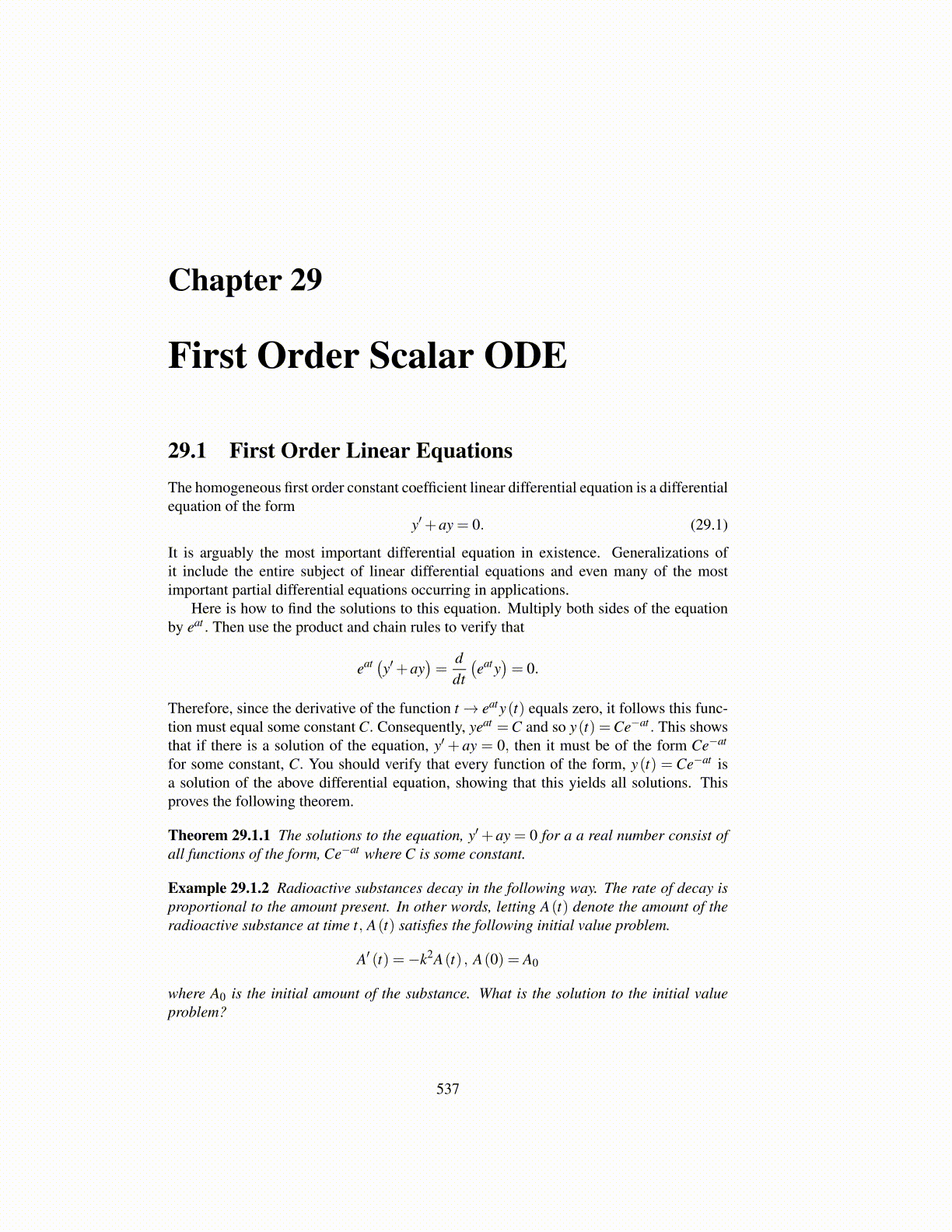
Chapter 29
First Order Scalar ODE
29.1 First Order Linear EquationsThe homogeneous first order constant coefficient linear differential equation is a differentialequation of the form
y′+ay = 0. (29.1)
It is arguably the most important differential equation in existence. Generalizations ofit include the entire subject of linear differential equations and even many of the mostimportant partial differential equations occurring in applications.
Here is how to find the solutions to this equation. Multiply both sides of the equationby eat . Then use the product and chain rules to verify that
eat (y′+ay)=
ddt
(eaty)= 0.
Therefore, since the derivative of the function t→ eaty(t) equals zero, it follows this func-tion must equal some constant C. Consequently, yeat =C and so y(t) =Ce−at . This showsthat if there is a solution of the equation, y′+ ay = 0, then it must be of the form Ce−at
for some constant, C. You should verify that every function of the form, y(t) = Ce−at isa solution of the above differential equation, showing that this yields all solutions. Thisproves the following theorem.
Theorem 29.1.1 The solutions to the equation, y′+ay = 0 for a a real number consist ofall functions of the form, Ce−at where C is some constant.
Example 29.1.2 Radioactive substances decay in the following way. The rate of decay isproportional to the amount present. In other words, letting A(t) denote the amount of theradioactive substance at time t, A(t) satisfies the following initial value problem.
A′ (t) =−k2A(t) , A(0) = A0
where A0 is the initial amount of the substance. What is the solution to the initial valueproblem?
537